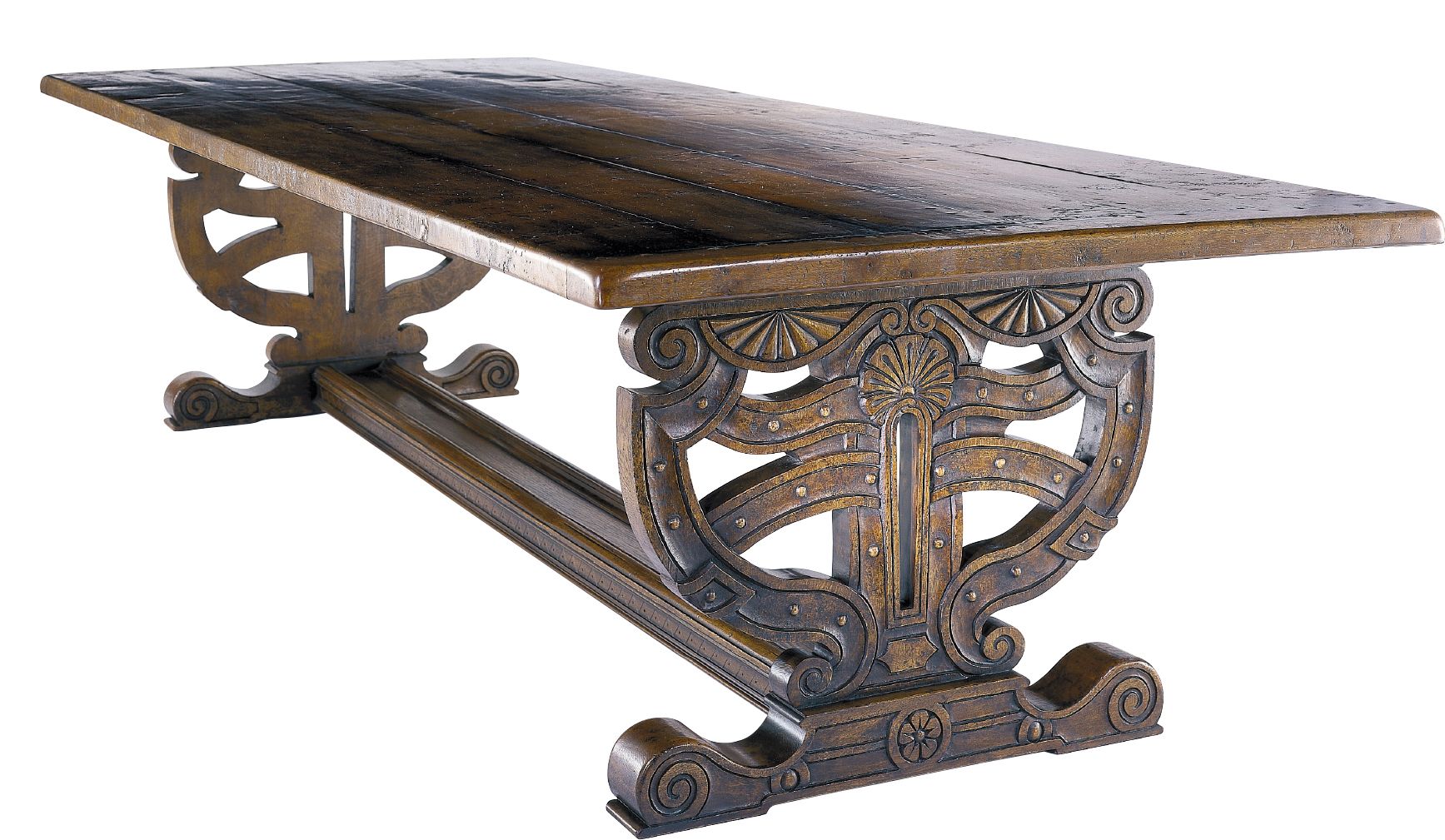
Historically, the English have been known to place great emphasis on good dining manners. It all started when the religious persecution under Henry VIII made it unwise to speak freely. Meals previously enjoyed by crowds in the Great Halls of nobles were scaled down to include only those a single refectory table could accommodate. Coincidentally, those refectory tables once were housed in monasteries.
By Victorian times, the meal was formalized – but not relaxing. Repression was the rule of the day. Not only was the sight of a female ankle considered scandalous, curved table legs were indecorous, too. Long linen table covers solved the problem and were just the beginning of what was considered “correct dining”.
The proper meal hour, the etiquette of serving, appropriate attire and subjects of conversation – even the food itself was under scrutiny. Mealtime was an event that needed perfect surroundings. The dining room housed lovely extended tables of exotic woods, gas chandeliers, heavy tapestries, live ferns – you get the idea. Even high chairs owe their existence to this period. Making an impression was everything.
Today the emphasis has shifted back to the kitchen and more leisurely dining. Not that fine dining doesn’t still have a place. Eagerly anticipated holiday gatherings and entertaining require larger dining rooms and tables that adjust in size.
A nod to the etiquette of Emily Post wouldn’t be out of place, either. Table manners never go out of style.
Let Elijah Slocum craft a table for your dining needs.
